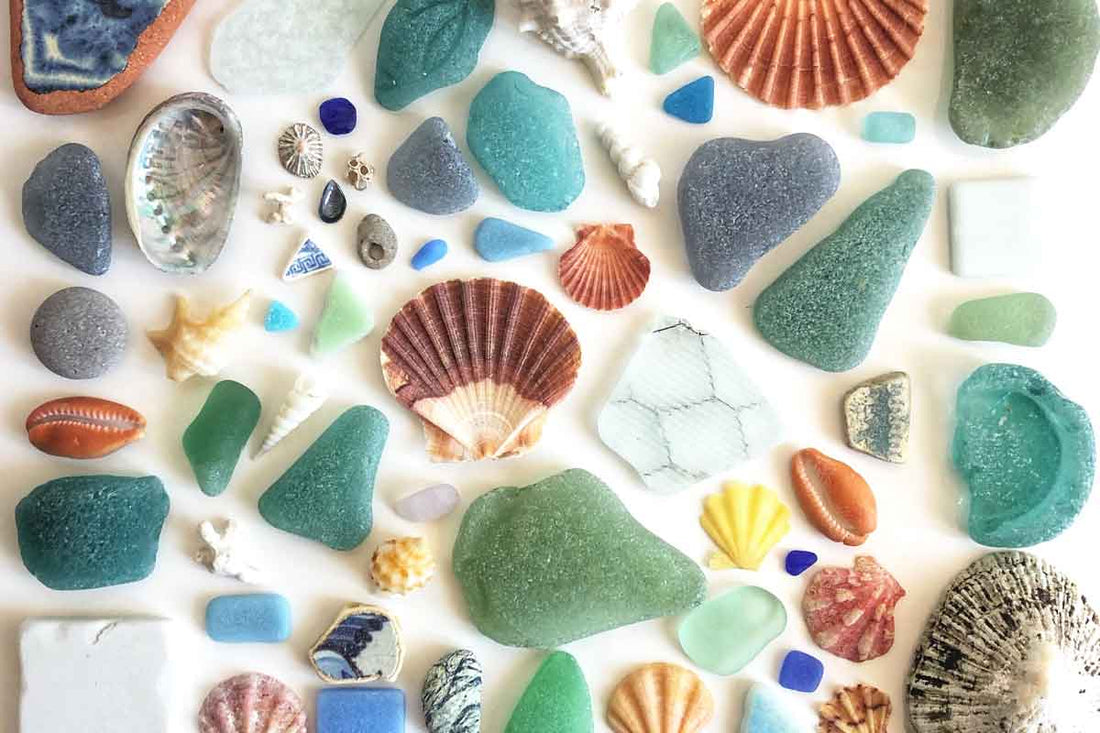What is Sea Glass?
There’s something magical about strolling along a beach and spotting a glimmering piece of sea glass nestled in the sand. These frosted, colorful treasures have captivated beachcombers and artists for centuries, but have you ever wondered what sea glass actually is, where it comes from, or how it’s made? Let’s dive into the fascinating world of sea glass and explore its origins, its journey, and why it’s so cherished today.
Where Does Sea Glass Come From?
At its core, sea glass is weathered, broken glass naturally tumbled by the ocean. It originates from discarded bottles, jars, shipwrecks, household items, and industrial debris, slowly transformed by the movement of water, sand, and time.
Different colors hint at different origins:
-
Brown from beer and medicine bottles
-
Green from soda and wine bottles
-
Clear or white from milk bottles and windows
-
Rare colors like cobalt blue, red, and purple from antique glass and ship lanterns
The history of an area often influences the types and colors of sea glass you can find.
How Long Does It Take to Make a Piece of Sea Glass?
Transforming a sharp shard of glass into a smooth, frosted piece of sea glass typically takes 20 to over 100 years.
Factors that impact the aging process include:
-
Strong wave action
-
Rocky beach composition
-
Prolonged saltwater exposure
-
Thickness and type of glass
The most prized pieces — deeply frosted and perfectly smooth — often spend decades or even a century at sea.
Are There Different Grades of Sea Glass?
Yes! Collectors and jewelers use grading systems based on texture, shape, and rarity:
-
Grade A (Jewelry Grade): Perfectly frosted, smooth, no sharp edges
-
Grade B (Craft Grade): Minor imperfections, still frosted
-
Grade C (Collector’s Grade): Rare colors, even if imperfect
-
Grade D (Raw/Industrial): Sharp, shiny, barely weathered
Higher-grade sea glass, especially rare colors like red or orange, can be quite valuable.

Can't You Just Put Glass in a Rock Tumbler?
While you can create tumbled glass with a rock tumbler, it’s not the same as natural sea glass.
Tumbled glass lacks:
-
Authentic surface pitting
-
Natural asymmetry
-
Historical significance
Collectors and experienced jewelers can often tell at a glance whether a piece was ocean-made or machine-made.
What Causes the Pitting on Sea Glass?
Pitting — the tiny, textured marks on the surface — is caused by:
-
Physical abrasion: Constant tumbling by sand and rocks
-
Chemical etching: Saltwater chemically reacts with glass
-
Time: Decades of exposure create deep, natural frosting
Pitting gives sea glass its unique, antique look and feel, differentiating it from modern tumbled imitations.
The Enduring Allure of Sea Glass
Sea glass is more than just discarded trash turned treasure — it’s a living testament to history, time, and nature’s artistry. Each piece tells a silent story of resilience, shaped by human activity and the ceaseless forces of the ocean.
Whether you collect it for its beauty, its history, or its connection to the sea, every piece of genuine sea glass is a precious reminder of the magic that happens when nature and time work together.


